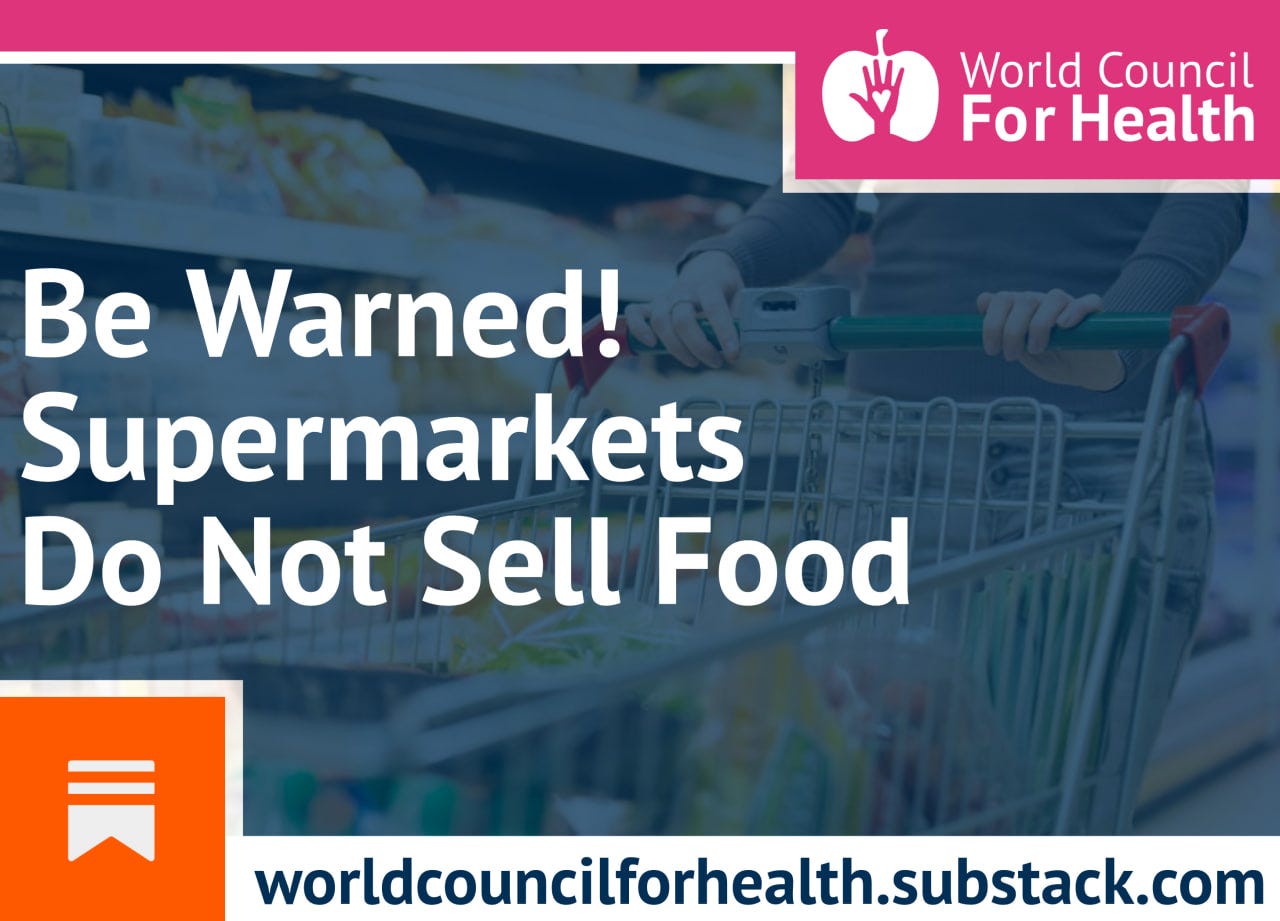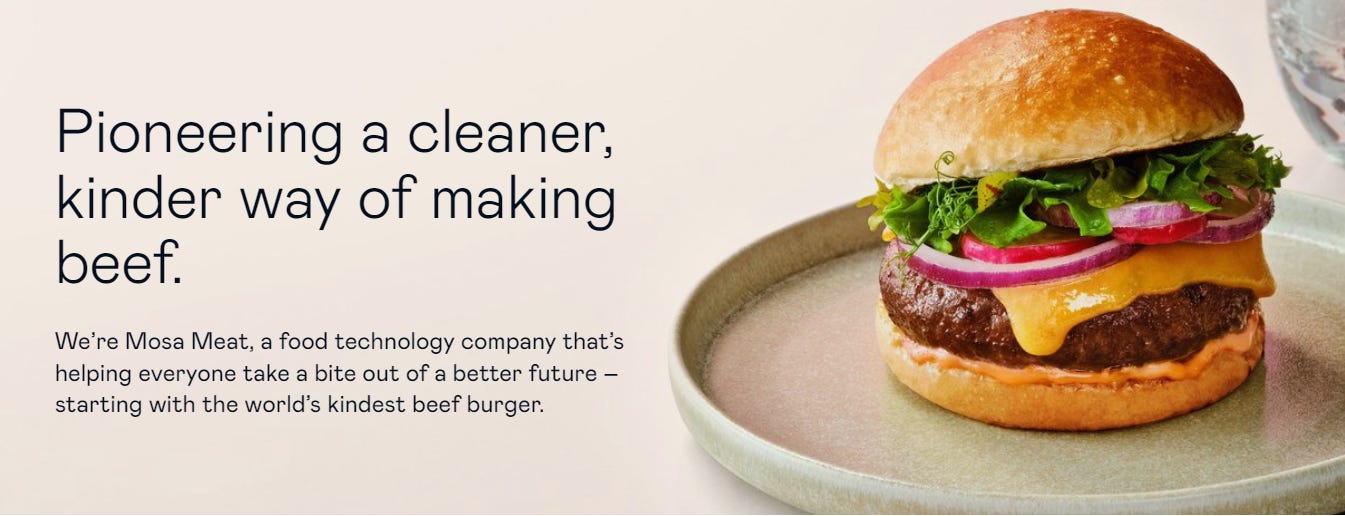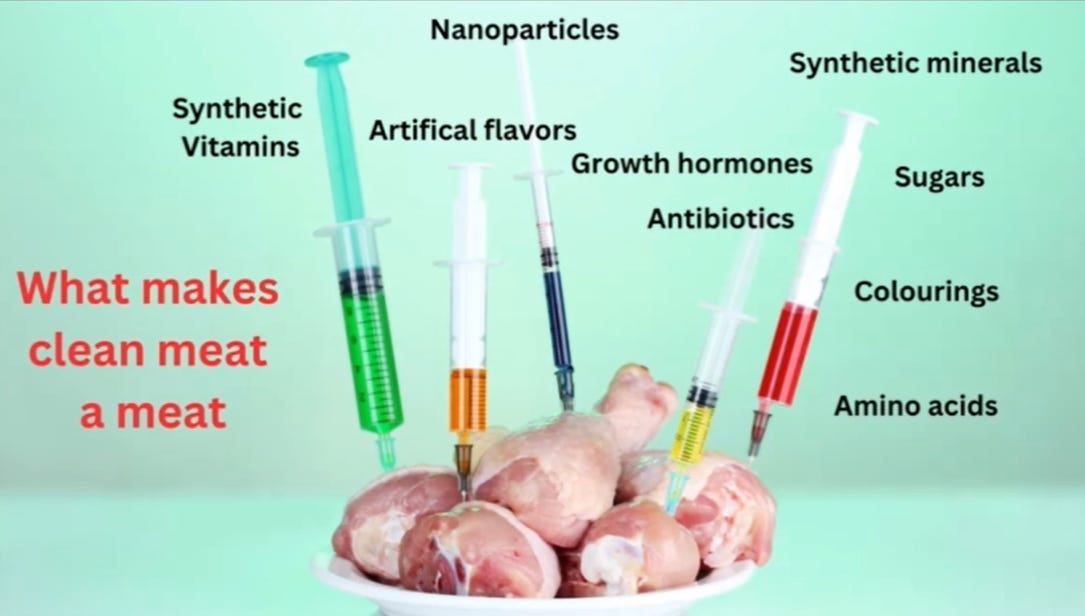Be Warned: Supermarkets Do Not Sell Food!
Dr Tess Lawrie explores the healing power of the food we eat and the true nature of “clean” meat.
Written by World Council for Health Correspondent Alice Ashwell, PhD.
Dr Tess Lawrie hosted Episode 114 of Better Way Live this week, which focused on two very different aspects of the topic ‘Food as Medicine’.
Matthew Anderson, an herbalist from St Lucia in the Caribbean, shared wisdom about local food traditions, and Christof Plothe DO, Steering Committee member of the World Council for Health, raised the alarm about developments in the production of synthetic, lab-grown meat—which qualifies as neither food nor medicine.
The Healing Power of Food: We Know What’s Good for Us
Matthew Anderson is a member of the newly formed St Lucia Council for Health, one of a growing number of Country Councils affiliated to the World Council for Health (WCH).
His father was a respected herbalist and Matthew continues the family tradition of healing, being a pioneer in the field of food as medicine.
He co-owns The Enchanted Kettle, a tea and beverage company, and loves introducing others to the healing power of good food.
Remembering our traditions
At the heart of life's substance lies an undeniable truth: that trees are the pioneer of food ... number one in the food chain, conveniently converting those elements and heavenly lights, using photosynthesis to bring forward the alchemical process of food substances. Just as mother's milk is best for the child, we too are offsprings of the earth—the child of the earth, the child of light.
With these simple yet profound words, Matthew reminded us of the wisdom of returning to our natural roots, just at a time when the convenience of the supermarket has been contributing to many of us forgetting our food and healing traditions.
Many centuries ago, Hippocrates stated that “Food is Medicine”, and it is in the bounty of nature that we find the ultimate medicine. Encouraging a reciprocal relationship with nature, Matthew invited us to be “guardians of the ancient genetic sequencing embedded in every leaf, ensuring a thriving connection between us and the earth.”
It is the energetic system that gives rise to the nutrients, and these nutrients become available to us through plants, which are also the source of our medicines. Just as plants have stems, today we are aware that our own stem cells contain our unadulterated DNA, which has the potential to develop into any tissue in the body. As humans, it is our responsibility to protect the original, unadulterated genetic material of plants, as these unique systems embody all the nutrients necessary for sustaining life on this planet.
Today our values have become confused. Rather than growing plants for their nutrient value, today they are mainly grown for their commercial value, which tends to elevate appearance above nutrition. This results in the quality of our food being compromised. Being attracted to bright colours and sweetness, we find fruit especially appealing, sometimes overlooking the value of the leaves of plants that contain other phytonutrients and elements that contribute to the wellbeing of the plants themselves and to us.
Living in the tropics, Matthew spoke about the value of plants as seasoning, especially in the days before refrigeration became available. Meat wasn’t just seasoned for the sake of taste but to preserve it by killing the bacteria that caused it to spoil. Out of necessity, people mastered the art of seasoning and food preservation using herbs. One Caribbean plant in particular that is very effective at preserving food is Pimenta racemosa or the West Indian bay tree. Its leaves prevent weevils infesting stored rice and flour, and prevent flies laying their eggs in meat being preserved by drying.
Today, however, the art of using herbs to preserve food has been depleted by our use of artificial preservatives. Unlike the herbs and spices used in the past, these are designed to preserve food for the shelf, not to preserve our lives.
Matthew observed that, at some point, what we had always accepted as ‘conventional medicine’—that is, the understanding that ‘food is medicine’—became viewed as ‘alternative medicine’. These concepts have been reversed, so nowadays, people first resort to Western (or what we now call ‘conventional’) medicine. If that fails, they may revert to more natural ‘alternatives’. We need to rediscover the original order of things, as the food we eat should be our medicine.
Health-giving foods
Matthew spoke about some of his favourite health-giving foods:
The Moringa tree (Moringa oleifera) grows extremely rapidly in St Lucia – reportedly at a rate four feet every 16 to 21 days. This is because the islands are volcanic and minerals are pulled out from the belly of the earth, brought up, and spread onto the surface, creating energetic soils containing lots of nutrients and highly charged particles like magnetite. Moringa contains more than 14 vitamins and minerals and a range of other compounds such as amino acids and enzymes that are very easy for the body to absorb. Matthew advised that moringa leaves should be eaten when they are green rather than yellow, which indicates that they have oxidised. To store the leaves, they should be dried as soon as possible so that they don’t go bad. Just one ounce of moringa is equivalent to a meal.
Chia seeds are a rich storehouse of Omega-3 fatty acids and other important compounds. Seeds are highly electric because they're alive. They can survive in a dehydrated state for years but once they are soaked in water, they spring right back to life.
Sea moss (Chondrus crispus, and other red marine algae) as well as chia seeds can be added to dried moringa leaves and ground to make a nutrient-dense, bioavailable superfood that can be added to other foods such as split peas or lentils, other vegetables, or even dried and powdered fish. Matthew emphasises that it is important to eat food that is truly nourishing and to cut down on food that is just empty energy.
Cinnamon can be added to sugar and ground up to make cinnamon sugar. In the right proportions, the cinnamon prevents the body experiencing a ‘sugar spike’ as it attaches to sugar molecules and slows down their absorption.
Cassava contains cyanide but indigenous people knew how to process it to be able to consume it safely. It is very effective at getting rid of parasites. Matthew credits this plant – as well as healthy lifestyles that included walking many miles daily foraging for food – for the fact that most people in St Lucia used to have a life expectancy of between 85 and 90 years of age.
Matthew is excited about the potential of biometrics to enable everyday people to monitor themselves and how they respond to foods with medicinal properties. By collecting anecdotal evidence in real time, groups can verify the results of making dietary changes. This function no longer needs to be outsourced to a small group of people with access to expensive and complicated monitoring systems.
People can now monitor their own food choices and determine the efficacy of ‘food as medicine’. At this critical time, we need to take responsibility for ourselves and for the young ones who are growing up. The survival of humanity depends on this. We are what we eat!
Finally, here is a particularly memorable takeaway from Matthew’s address:
I want everyone to understand there is no food in the supermarket. They probably have snacks and other things that are very tasty … but we should not mistake food for snacks. We should not mistake foods for things that that are designed primarily to give us some sort of a pleasure …
Clean Meat: What You’re Not Being Told
WCH Steering Committee member Christof Plothe DO, is an osteopath and integrative health practitioner who combines naturopathy, environmental medicine, and holistic dentistry with conventional medicine.
He is also a prolific writer and educator committed to sharing his wisdom on natural approaches to health.
Christof’s Better Way Live presentation was “a wake-up call to what we shall be facing soon because there are people who want to change our planet and our essential nature.” It exposed the myths behind the next generation of lab-grown, genetically modified foods—in this case synthetic meat, or what those pushing the product are calling ‘clean meat’.
To kick off, Christof shared a brief video from a bistro in Vienna, asserting that we now have the power to program not only the shape and colour of synthetic meat, but also how it moves!
This is not a restaurant for the faint-hearted …
Some representatives of organisations such as the World Bank, World Economic Forum, and United Nations have become so powerful and intent on global control that they have been described as ‘controligarchs’. Bill Gates is playing a major role in their strategy to reshape the way we view our food and is involved in more than 15 companies involved in synthetic meat production. He is also the largest private owner of farmland in the USA, controlling over 242,000 acres.
Others buying up farmland and investing in synthetic meat include Richard Branson, Jeff Bezos, Tyson Foods, and Cargill. The large food companies were also major investors in the earlier Green Revolution, which transformed agriculture from traditional, family-owned farms to industrial-scale production with its patented seeds and agrichemicals, such as artificial fertilisers and pesticides, which have had devastating consequences for human, animal, and environmental health.
Agenda 2030—the so-called ‘sustainable development’ agenda—is intent on reducing emissions of Carbon Dioxide in an attempt to prevent climate change. Farmers are being targeted, in an attempt to reduce agricultural emissions by 70%. This has already led to plans to shut down 3,000 farms in Holland, and to cull one million cows in Ireland. Ironically, this will primarily affect small-scale producers of grass-fed beef who actually care for their animals rather than industrial-scale operations, which are known for their toxic inputs, polluting outputs, and unethical treatment of animals.
It is local farmers who stand in the way of the ultimate centralisation of food production and even greater profits for those invested in Big Agriculture. These recent attempts to destroy independent farmers really have nothing to do with halting climate change. Rather, it is an attempt to take control of the entire food chain. Ironically, this will have devastating effects on the health of people and nature.
Interestingly, this shift to biotech-based food production is taking place at a time when most of the artificial fertiliser patents have run out. Food production—whether eggs, dairy, fish, or meat—appears to be shifting into the domain of synthetic biology, a field combining biology, engineering, and computer science. By reprogramming the genetic code of organisms, from cells and microbes to plants and animals, new biological systems can be designed, constructed, or modified. Already, synthetic milk products are being produced, with Bill Gates having funded development of a completely synthetic imitation of human breast milk.
While there are obvious ethical and health concerns relating to industrial agriculture, are there similar issues relating to synthetic meat—or what is euphemistically called ‘clean meat’?
Firstly, synthetic meat is produced from stem cells or immortalised cells. We are told that these cells are harvested from animals under local anaesthetic. But, as synthetic blood is cultured from stem cells obtained from live foetal bovine hearts, the question is: how are these harvested without actually slaughtering pregnant cows? Even if these foetuses are extracted from cows that just happened to be pregnant when they were slaughtered, their origin calls into question adverts that claim that theirs is the “world’s kindest beef burger”!
Once the cloned meat protein has been produced, this is not the end of the process. It then requires numerous additives to provide the meat with flavour, colour, and nutritional content, and to kill the bacteria that might contaminate the culture and the product. Finally, this concoction is 3D-printed to resemble whatever cut of meat you choose to order, from chicken and beef to long-extinct mammoth.
These products are already available in the USA, Israel, and Indonesia; another product—a transgenic soybean—is being developed to replace pork. The FDA gave the go-ahead for the production of ‘clean meat’ in the USA in 2023, despite many concerns not having been adequately addressed. These include the possible presence of contaminants, and unintended effects of immortalising cell lines. This product is clearly genetically modified, and the genetic engineering process may result in unintended DNA damage. One concern is that modifying genes to promote the continuous growth of cells could promote cancer.
Let’s look more closely at this issue. Lab-grown meat is made from pre-cancerous or cancerous cells. For decades companies like Pfizer and Johnson & Johnson have cultured huge volumes of these cells, which multiply rapidly and endlessly, to make monoclonal antibodies, vaccines, and biotherapeutics. Now they want to use these cells to manufacture fake meat for human consumption.
Of course, investors like Bill Gates deny that this poses a risk for humans, but it should be borne in mind that in a slaughterhouse if a carcass is found to have a tumour, it is destroyed. So, while there is as yet no evidence that lab-grown meat will cause cancer (which may only be expressed in 20 years’ time), there is also no evidence that it will not. Are we willing to take that risk, bearing in mind that no long-term safety studies have been conducted? And beyond the cloned meat, let’s not forget the possible health impacts of the numerous artificial substances added to make the product palatable.
The argument for all this manipulation of our food appears to be ‘climate change’. But even if carbon dioxide emissions are a major factor in causing climate change (which is debatable), just how does the carbon footprint of ‘clean meat’ compare with conventionally farmed meat? Studies are now suggesting that lab-grown meat may consume as much as 25 times more energy than conventional farming per kilogram! So, much like the covid protocols that actually had nothing to do with promoting health, it appears that fake meat has nothing to do with saving the planet!
Fortunately Italy, whose food culture is a matter of great pride, has become the first country to ban artificial meat. They know that the healthiest, most environmentally-friendly, and cost-effective nutrition available is that which is based on tens of thousands of years of safety studies—natural, local, and organic food.
Let us all follow in Italy’s footsteps, preserving local food cultures, and the natural systems of agriculture upon which these traditions are based.
In conclusion …
Dr Tess Lawrie closed the session with a new song by Kurt Shaw entitled Heart of a Man. It is not easy being a man in today's society, and Kurt wrote this song in acknowledgment of the plight of men in modern society that is often overlooked.
If you find value in this Substack and have the means, please consider making a contribution to support the World Council for Health. Thank you.







Great article, thank you! If you're interested in challenging yourself to eat better, check out the WCH's Great FreeSet: https://thegreatfreeset.org/04-its-time-to-break-upyour-relationship-with-fake-food/
Vitamin B17 regulates seed cell growth and should be regulating human cell growth to prevent cancer. World without Cancer Edward G Griffin